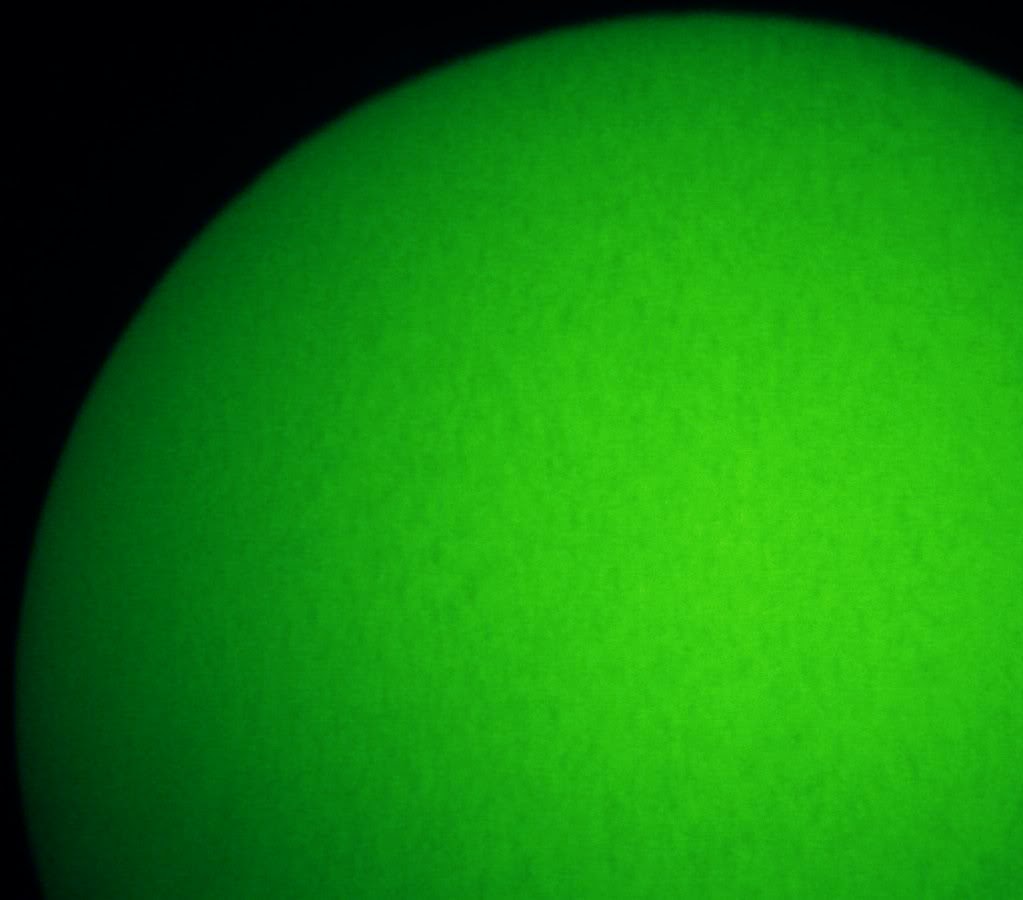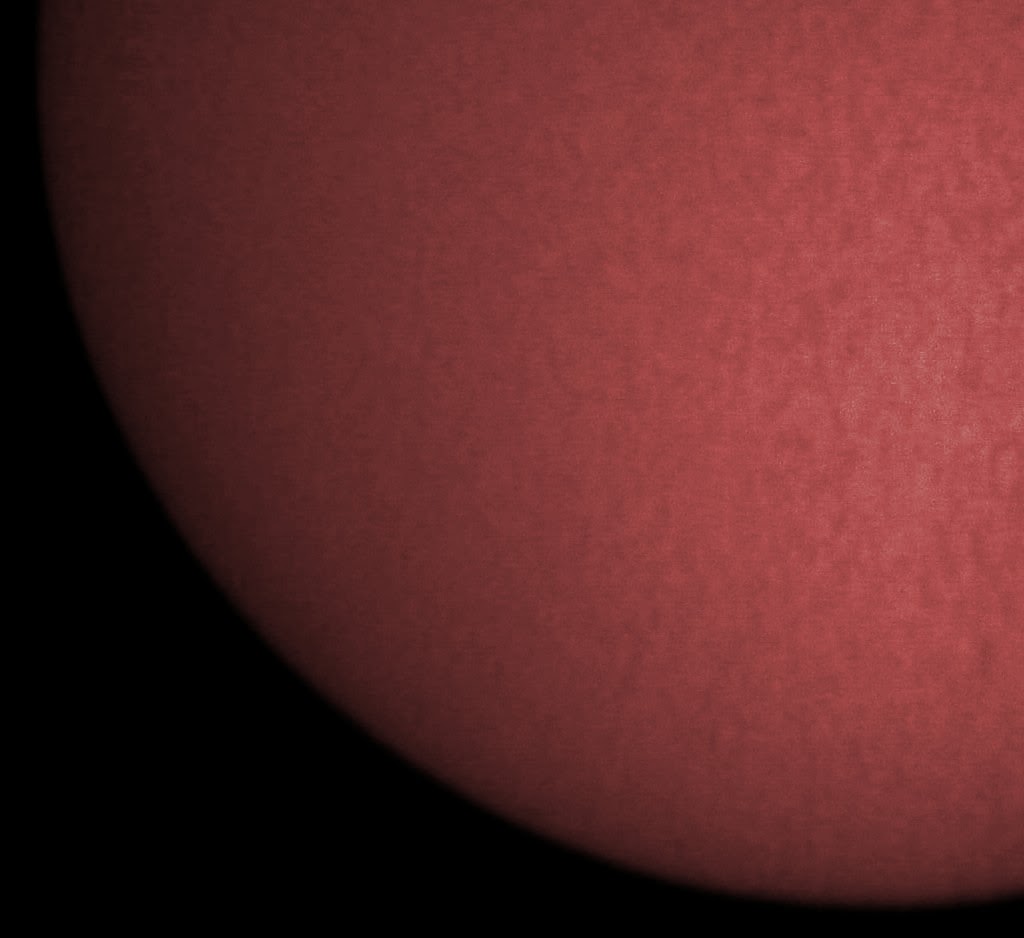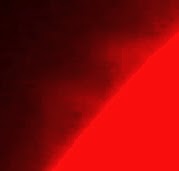January 31st 2030 GMT
I returned with my telescope and binoculars. This time, although it was hazy, the Moon and Jupiter remained visible.For some reason, I was struggling with the Moon but took some full disc and close-up shots. Not many shots were usable. The full disc shot was composed from 18 frames.
The first close-up shot shows Tycho and was composed from 9 frames.
The second close-up was composed from four frames.
The other close-ups were composed from single frames.
I struggled with the Jupiter shots. The one with moons caught three close together but the fourth was missing. The surface shots were mostly way over-exposed and I could only obtain the main cloud belts after much processing.
January 31st 2010 GMT
I had a look outside with the binoculars. I used the Orion Great Nebula (M42) and Pleiades (M45) to check focus and the Andromeda Galaxy (M31) to test the clarity of the sky in the region of the comet. It was hard to find but somewhat west of where I expected it to be and quite near Perseus. It sounds boring (although I was more than pleased to see it!) but it appeared just as it did a few days before.January 30th 2100 GMT
There was some cloud about but many patches of sky were clear and I could see the main stars of most constellations. By the time I had my winter clothes and the telescope ready, only the Moon was visible. I had intended to do some frames of the Moon and Jupiter but could only manage full disc frames of the Moon of which I had 66 frames. It clouded over completely before I could do any close-ups. I processed the best 13 frames to get this result:January 30th 0925 GMT
It was rather clear, so with bad weather forecast for later in the day, I bin scanned the Sun and saw the original sunspot had split and a new one had rotated on.January 29th 0955 GMT
Conditions were slightly hazy and I saw the sunspot I had seen 3 days earlier and it had rotated.January 28th 2100 GMT
After a wet morning and mostly cloudy afternoon, it cleared enough for me to take some Moon shots. The first shot is the full disc composed of the best 40 frames of about 60. The second shots are moderate close-ups of Plato from the best 10 of about 25 shots and the real close-up was from the best 6 of 20 frames. As it was cold and I didn't want to be out long, I used the camera's optical zoom, rather than changing eyepieces.January 27th
I reprocessed some hydrogen alpha shots from June 1st 2010.January 26th 0925 GMT
The sky was clear for a while, so I checked the Sun for sunspots. I saw a single one but it was quite large.January 25th
I reprocessed some solar hydrogen alpha shots from June 3rd 2009.January 24th 2325 GMT
I bin scanned the night sky. It had cleared somewhat compared to earlier but there was a lot of haze around. I started off with Jupiter and I could see 3 moons. Having got good focus, I proceeded to find the comet. It wasn't easy. The Andromeda Galaxy (M31) was visible but quite poor. I found Comet Lovejoy but, apart from a slight hint of a tail, looked quite like it did a few says before.
I saw the Orion Great Nebula (M42). Although it was quite easy, it did not appear special. The same went for just about everything, like the Pleiades (M45), Hyades, Beehive (M44), M34, M35, Melotte 20 and the Perseus Double Cluster. Down in the murk, M41 was almost invisible and I could not see M36, M37 nor M38 at all. Possibly because it was well-placed I did catch M81 and M82 in Ursa Major.
However, there were no signs that I could photograph anything better than I had already photographed before and it was freezing.
January 24th 1830 GMT
I went out, primarily to see the Moon. There was a lot of cloud and little was visible, so I took some full disc shots and close-ups.
January 24th 1230 GMT
I checked the Sun with my PST. The solar disc seemed bland, except for a sunspot that I'd missed in the binoculars earlier. I took some full disc and close-up shots.
January 24th 0925 GMT
I checked the Sun in my binoculars but didn't see any sunspots.January 23rd
I reprocessed some older hydrogen alpha shots from May 11th 2009.May 9th 2009
January 23rd 1005 GMT
The sky was mostly clear but there was a bit of haze near the horizon. I was not able to detect any sunspots with my binoculars.January 22nd
I bin scanned the Sun through cloud. The sunspots I had seen a few days ago had rotated and appeared as a single sunspot, probably due to solar rotation effects and the resolution of my binoculars.January 21st
I reprocessed some hydrogen alpha photos from 2009.April 25th 2009
April 29th 2009
January 19th 1200 GMT
I checked the Sun with the PST, having settled for the Moonfish 15mm eyepiece and Magni Max image amplifier. The region surrounding the sunspots was interesting and there were some prominences.January 19th 1130 GMT
The conditions were clear and there was a new sunspot group of three near the centre of the solar disc that had appeared very quickly. The Sun can be quite amazing at times.January 18th 1700 GMT
I saw Venus visually and quickly went out with my binoculars. I soon found Mercury, too, but could not detect that their phases were other than 100%. I took my 127Mak out and, stupidly, let my mount swing and it trapped my fingers and not for the first time! I cut one. To make matters worse it clouded over before I could photograph anything at all.January 18th 1120 GMT
It was very clear, so time to try and get a hydrogen alpha shot or two. The idea was to use a larger image size by using a Magni Max image amplifier. I also used a variable polarising filter as part of the imaging train but my initial impression were that it did not help.The Sun was very quiet but there was a large filament where the sunspots has been. The bad news is that I managed one image and did not capture the whole disc. The good news was that it captured all of the features on view and I was rather pleased with the result.
January 18th 1000 GMT
Even though the sunspots were still visible on the Big Bear images, they had faded and were close to the limb. I could not find them through my binoculars and filters.January 17th 1225 GMT
Although there was a lot of blue sky, most of it was near the zenith and the Sun was embedded in a haze of light cloud with some foreground cloud moving across it. The sunspot pair had apparently coalesced into one, although this was a "line of sight" effect, as they were approaching the solar limb. They still appeared as two sunspots in the Big Bear images.January 16th 2130 GMT
OK, Jupiter and a million and one other things were about. However, they would be around later in the year, so there was one main object. Yes, I did do some unsuccessful snaps of Jupiter's moons and I did snap the Hyades and Pleiades to get focus. The main target was Comet Lovejoy 2011 W/3 and a botched session could be the last chance. Indeed, one set of snaps was horribly out of focus.My kit was simple. I had a Skywatcher Startravel 80 on an EQ1 mount. Now this set-up is great for visual use but attaching a DSLR introduces all sorts of problems.Getting focus is hard enough but with a DSLR as heavy as the 'scope, focus can slip. Ironically enough, the mount can otherwise be stable. What needs contortions is looking through the camera viewfinder especially when the object is not near the horizon. Yes, I HAVE tried using a star diagonal and 1.25in thread but there isn't enough focus travel to allow it. Shame, as I could then use Barlow lenses and focal reducers.
Everything was at ISO 3200 and 4 seconds exposure. Just for general information, the StarTravel 80 has a focal length of 400mm.
I used Deep Sky Stacker on the comet and it stacked 9 of 29 frames and finished off in GIMP.
I wasn't too happy with the other images I had captured. I had only one useable frame of the Hyades.
It was a similar story with the Pleiades (M45) but (without overblowing my trumpet) consider it my best single frame shot of them.
January 16th 2115 GMT
I went out with my binoculars to find the comet. I started off looking at Jupiter to get focus. I only saw two moons. I had a look for the comet but had trouble finding it. I paused at the Pleiades (M45) ad they looked great. I found the comet. It didn't appear significantly brighter than recently but it did have more structure. It looked distinctly like a globular cluster and would have thought it to be one had I not known it was a comet and having seen the whole Messier catalogue.January 16th 1120 GMT
There was some thin cloud around but I managed to see the two sunspots quite clearly. They had rotated since the day before and were becoming very close to each other, almost appearing as one.January 15th 1640 GMT
Cloud and showers persisted throughout the afternoon. I had a quick look outside and saw Mercury close to Venus. However, cloud rolled in and a shower soon followed before I could even grab a pair of binoculars!January 15th 1420 GMT
I bin scanned the Sun through moving cloud and saw that the sunspots from the day before had rotated.January 15th 0815 GMT
I was rather busy, so didn't have time to through a few extra layers of clothes on and lug a telescope out in the cold. Instead, I checked the waning crescent Moon with my binoculars. Grimaldi was very well placed, due to libration and some of the southern craters were still visible. It was a welcoming sight.January 14th
I reprocessed some solar hydrogen alpha shots.March 27th 2009
January 14th 1235 GMT
It had been six days since I'd seen the Sun, the few clear periods during the day co-inciding with me being too busy to go out. The sunspot patterns had changed completely.January 11th
It was clear in the morning but the Sun was hidden by a bank of clouds. The sky proceeded to cloud over completely, so it was time to reprocess some more hydrogen alpha shots.
February 21st 2009
March 27th 2009
April 23th 2009
April 9th 2009
January 10th 2220 GMT
I went outside again and it was much more clear. I found the comet easily enough and thought it had a large angular size, at least 20 arcminutes. I saw no tail but, knowing that no bright galaxy nor globular cluster exists in that part of sky, knew exactly what it was. As for brightness, I considered it comparable to the Orion Great Nebula (M42).As I was still recovering from illness and it had cooled down a lot, I did some single frame exposures of the area, hoping to catch it on "film". I tried shots of the Pleiades (M45) and Hyades as well. I had some focus and dew problems but managed images of Orion, the Hyades and Pleaides together and Comet Lovejoy 2011 W3.
January 10th
I reprocessed a hydrogen alpha shot from February 8th 2009. I started clearing out older photos that didn't show much and reprocessing those that were worth revisiting.January 10th 1845 GMT
It was clear enough to comet hunt, despite the cloud. I didn't see it but caught the Orion Great Nebula (M42) through cloud. The Pleaides (M45) and Hyades showed well. Further north it was clear. Melotte 20 and M34 showed really well. The Perseus Double Cluster was great but, being more or less directly overhead, was a real neck-strainer.
January 10th 1320 GMT
I bin scanned the Sun through cloud but did not see any sunspots.January 8th 1200 GMT
It continued to be clear. I'd had some trouble capturing what I really wanted to show on camera, so I used another eyepiece for eyepiece projection with my PST and did some full disc shots. I could see a lot of detail visually but only a prominence came out, due to overexposure.January 8th 1125 GMT
After a rainy start, the sky cleared and I was able to check the Sun with my binoculars and filters. The sunspot pattern had changed quite considerably in two days.January 6th 1235 GMT
I observed the Sun with my binoculars in moving cloud. It took a while to clear enough to see the sunspots. It was the same group that I had seen 4 days before. They had rotated and changed shape a little bit.January 2nd 1400 GMT
The sky was quite clear but the Sun was noticeably low down. I did a series of shots with my new 'phone camera and compact digital camera. This was the best of the 'phone images, not great but first light!The was a nice prominence display and activity surrounding the sunspots. I took some full disc and close-up frames, some more successful than others!
January 2nd 1035 GMT
The first action of the new year was a solar bin scan. There was a lot of activity in the same place that I had seen the sunspots four days earlier. Surely, those sunspots would have rotated and still be visible? The sunspots I'd seen would be new activity, logically?I was unable to see the Big Bear images, so had no evidence.
































































































No comments:
Post a Comment